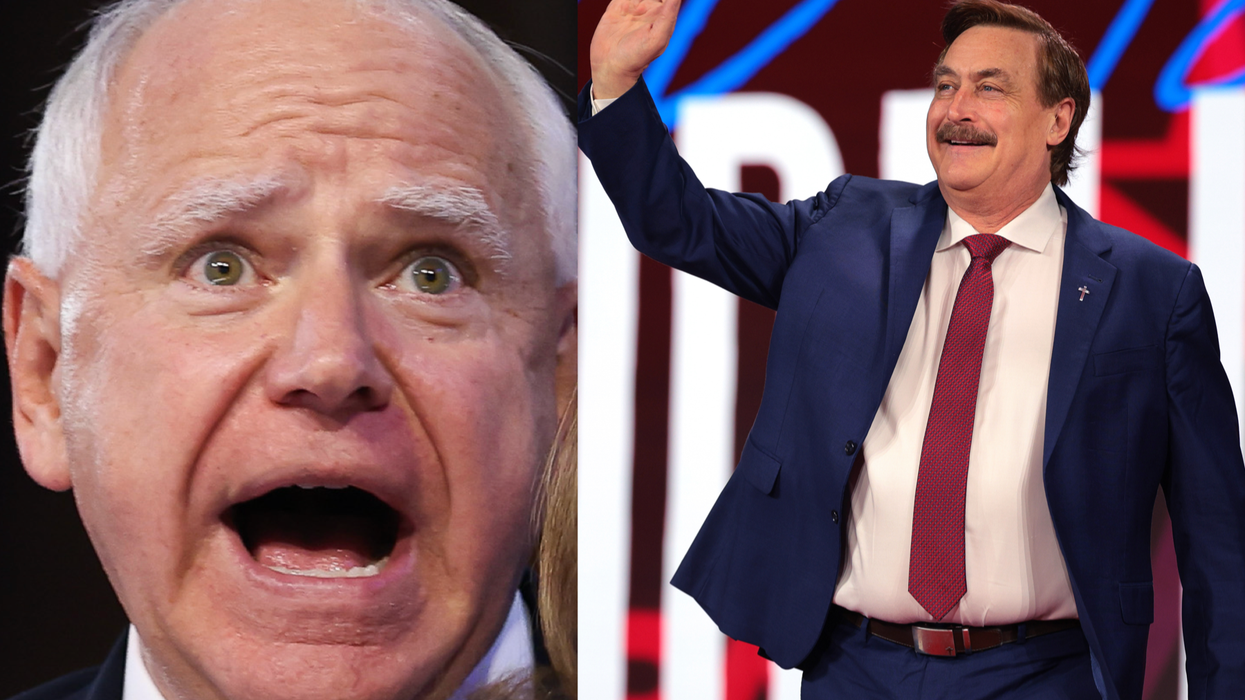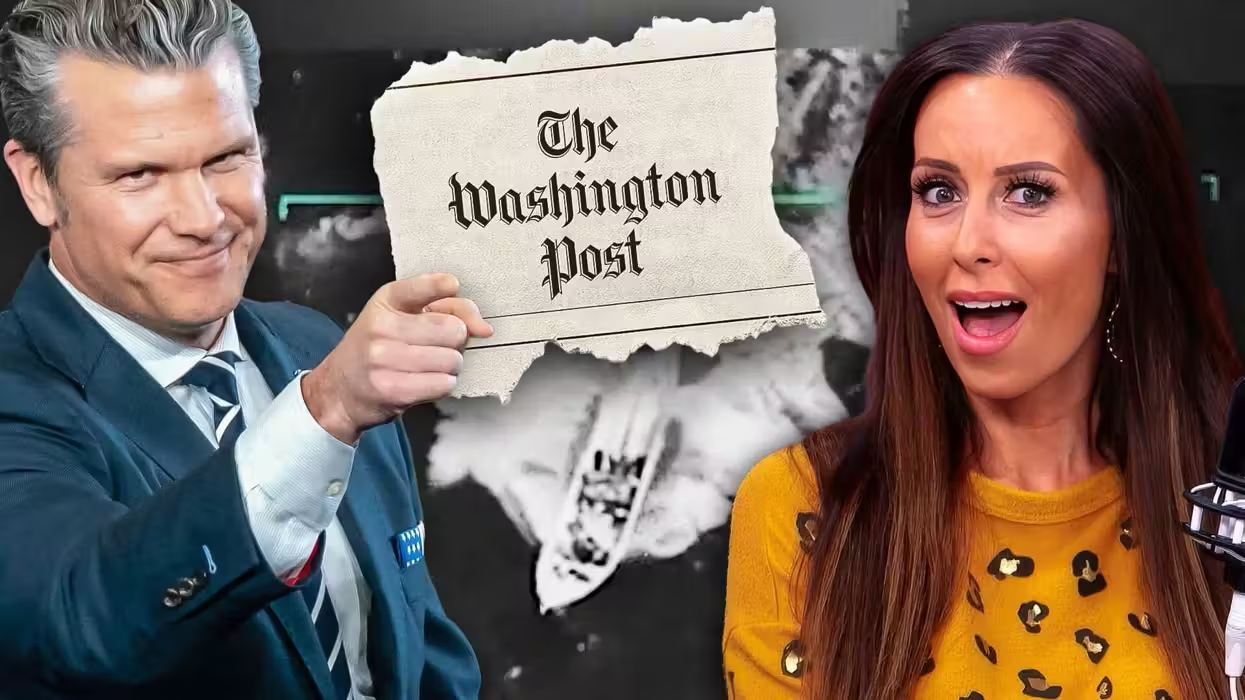
© 2025 Blaze Media LLC. All rights reserved.
Nothing would send a more potent message to the voters than Republicans swiftly passing a budget reconciliation bill completely repealing Obamacare and landing it on Trump’s desk the minute he steps away from the inaugural ball on January 20, 2017. If conservatives keep up the pressure, what was once considered a pipedream could become a reality.
What has ailed this republic since the New Deal and Great Society is that whenever Republicans get into office, they enshrine every federal program of the Left — at best maintaining the status quo and at worst expanding the program, albeit slower than Democrats desire. Like a ratchet that only turns in one direction, once a government program is passed, it can only be expanded but never rescinded.
Republicans have one opportunity to change that trajectory, fulfill a campaign promise, bring much-needed relief to millions of families, and — for the first time in modern history — completely terminate a harmful government program. Will they waver at the goal line?
The immediate opportunity for repeal
Conservatives will never have more political capital to repeal Obamacare than on the first day of Trump’s presidency, while people are paying their first monthly premiums after the newest massive increase. When Congress convenes on January 3, they will have 17 days to pass a repeal bill through both chambers to achieve this shock-and-awe fulfillment of the most important mandate from this election. Nothing else must get in the way of crafting a budget reconciliation bill with instructions to repeal Obamacare.
Here’s how it works.
Given that Republicans have not passed a budget for FY 2017, they can still use this fiscal year’s budget resolution to pass a reconciliation bill in January, circumventing the filibuster (reconciliation is not subject to the filibuster) without squandering the coming year’s reconciliation bill for other fiscal reforms.
Congress simply passes a budget resolution establishing the topline expenditures and revenues for each function of government and zeros out funding for Obamacare. Concurrently, the budget resolution sends instructions to several committees to craft a reconciliation bill to reconcile the budget resolution, which contains zero funding for Obamacare, with a statutory reality of repealing the actual law containing the massive spending. Once the reconciliation bill is placed on the floor of the Senate, it cannot be filibustered.
The price-hiking coverage mandates must be repealed
So where is the complication?
Institutional Republicans are wrapped around the axle over what the Senate Parliamentarian will say about their ability to repeal the full law through reconciliation. The prevailing assumption is that the Parliamentarian will once again rule that — pursuant to the “Byrd Rule” added to the 1974 Budget Act — each individual provision of a law repealed through budget reconciliation must result in net budget savings. It is for this reason why, in the reconciliation bill Republicans sent to Obama last year, they only included repeal of the insurance exchange subsidies, Medicaid expansion, individual and employer mandates, and tax hikes. They left in place the most onerous part of the law — the thousands of pages of insurance coverage mandates — because they feared the Parliamentarian would rule that they are pure policy changes without budgetary effects.
This recalcitrance is merely an excuse from Republicans who don’t understand health care or are too scared to get rid of the absolute worst components of Obamacare. It’s no secret most Republican leaders want to keep the guaranteed issue (pre-existing condition requirement) and community rating (forcing insurers to provide the same rates, irrespective of demographic or health status) mandates.
Trump has also expressed support for this idea. But Republicans must remember that this is the lynchpin to reducing costs and increasing options and competition for consumers. As such, the coverage mandates can be tied to full repeal, as they are directly supported by the exchange subsidies and insurance company kickbacks, which are budgetary in nature.
Since when was the Parliamentarian’s interpretation of Senate rules tantamount to judicial review in that each section can be severed out and judged on its own merits for compliance with the rules? There is no reason why Senate Republicans can interpret the precedent of the Byrd Rule as applying to the legislation in totality — just like they did with Welfare reform in 1996: pass full repeal in one sentence, and score it as the massive net savings we all know it to be.
Given that elected Republicans control the chamber and preside over the chair, they don’t have to follow the recommendation from the unelected Parliamentarian. They can define the rules of the chamber in accordance with their interpretation. While we might not want to overrule the Parliamentarian on a daily basis, at some point, Republicans are going to have to push the envelope to restore the republic. Obamacare is the place to begin.
Failure to repeal coverage mandates will doom GOP
There is a looming pitfall confronting Trump and Republicans if they repeal only the subsidies and the individual/employer purchase mandates but not the price-hiking coverage mandates, even if they retain the subsidies for a one- to two-year transition period. The media will be full of stories that the great achievement of Obama’s presidency is gone, yet the prices will not go down.
Actually, in a case of adverse selection, the premiums will go up even more. Insurance companies will see no path to offering competitive and innovative plans (because the mandates will still be in place) but thanks to the loss of subsidies and the waving of the individual/employer mandate, healthy individuals will exit the exchanges, corporations will stop offering coverage, resulting in even less revenue going into the already-insolvent regulated insurance plans. Premiums will be higher than ever, and at that point, there will be no more excuses to blame it on the Democrats.
This is why it’s so important that even as a grace period is given to retain the subsidies until a full, free market replacement plan is in place, the mandates are sunset as early as possible, preferably before May 3, 2017, when insurers must submit their 2018 plans to CMS for review.
This will allow insurance companies or start-ups who want to innovate to begin advertising all sorts of new plans with no restrictions, giving the American consumer a sense of what a post-Obamacare world would look like. The enticement of more plan options, much cheaper premiums, and expanded networks of health care providers will overcome the liability of those with pre-existing conditions losing their insurance (and not eligible for other programs), and the grace period will provide Congress with enough time to implement the free market replacement plan.
‘Repeal’ must be decoupled from ‘replace’
Some health care experts are suggesting that no action on repeal take place before a replacement plan is ready. That way, there is no risk of dropping people with pre-existing conditions or implementing a half-baked Obamacare repeal that, as noted above, would make matters worse.
The political reality is that repeal of Obamacare must be completely decoupled from the replacement plan. There are dozens of free market ideas, but unlike with Obamacare, they will need to be implemented only after a long period of debate and public input. If we are going to encumber repeal in the outcome of the replacement plan, there is no way the critical mandates will ever get repealed. And let’s not forget, the pre-existing condition mandate is not an ancillary part of Obamacare; it is Obamacare. Let’s not pretend that the heart and soul of Obamacare — what is driving up costs and eliminating choice and competition — will ever go away if the GOP establishment has its way.
Republicans must remember the vast majority of the voters want cheaper premiums, more options, more innovation, and government out of the business of restricting access to actual health care (not just health insurance). The number of people with pre-existing conditions who are not already eligible for the more than $1 trillion spent on government health care programs is overstated and pales in comparison with those who just want cheaper plans with more options.
Voters in Colorado, while supporting Hillary overall for president, overwhelmingly swatted down a plan to implement single-payer ColoradoCare by a margin of 80 to 20 percent. Voters will understand if everything is not in place from day one as long as they see that Republicans are keeping their word and actualize a downward trajectory in costs.
Full and immediate repeal: The only viable path forward
When trying to repeal the most destructive fiscal policy of all time years after its implementation, one which effects one-fifth of the economy, there is no perfectly clean way of enacting it without hiccups. But that is the fault of those who set the fire, not the fault of the firefighters.
The path forward is immediate and complete repeal. The guiding principle in the short-run must be prioritizing repeal over replace, lowering costs over universal coverage, and bringing relief to consumers before cutting the federal budget. This is why the subsidies should be kept for two years, but the coverage mandates must be dropped for the 2018 insurance plans so that the private sector can immediately lower costs but still retain this year as a transition period for those with pre-existing conditions.
Concurrently, Donald Trump must harness his populist appeal against big government and the health care industry by immediately suspending the kickbacks for insurers. In one of the many ways the Obama administration has legislated over and beyond the statute itself, it has been reimbursing insurers with cost-sharing subsidies for providing discounts to low-income families.
Earlier this year, in a legitimate exercise of judicial power — interpreting instead of nullifying a statute — Judge Rosemary Collyer sided with House Republicans in asserting that the cost-sharing subsidies were appropriated without consent of Congress.
While it is hard to anticipate the actions of the private sector, by repealing the coverage mandates with a reasonable transition period and concurrently making it clear that all subsidies and kickbacks are permanently terminated (Trump should cancel the appeal of Judge Collyer’s injunction), insurance companies will have no wiggle room other than to utilize the de-regulation to offer a multitude of market-based plans, including catastrophic and limited benefit plans.
While no repeal of such a major program will be perfectly clean, this is the best option — indeed the only option — that would ensure the most onerous parts of the law are repealed. Conservatives must focus on the policy and political effects of the law that they know and understand with certitude, not on the speculative fears of those who don’t want the law repealed.
For too long, America has operated like the ancient Persian government described in the book of Esther, where “a writ that is written in the name of the king and sealed with the king's ring cannot be rescinded." The opportunity and the imperative to break that reality is here for the taking.
Want to leave a tip?
We answer to you. Help keep our content free of advertisers and big tech censorship by leaving a tip today.
Want to join the conversation?
Already a subscriber?
Blaze Podcast Host
Daniel Horowitz is the host of “Conservative Review with Daniel Horowitz” and a senior editor for Blaze News.
RMConservative
Daniel Horowitz
Blaze Podcast Host
Daniel Horowitz is the host of “Conservative Review with Daniel Horowitz” and a senior editor for Blaze News.
@RMConservative →more stories
Sign up for the Blaze newsletter
By signing up, you agree to our Privacy Policy and Terms of Use, and agree to receive content that may sometimes include advertisements. You may opt out at any time.
Related Content
© 2025 Blaze Media LLC. All rights reserved.
Get the stories that matter most delivered directly to your inbox.
By signing up, you agree to our Privacy Policy and Terms of Use, and agree to receive content that may sometimes include advertisements. You may opt out at any time.






